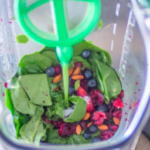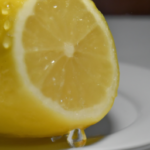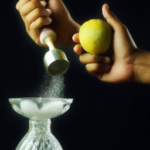Juice Tips and Tricks
How To Clean Coffee Maker With Lemon Juice
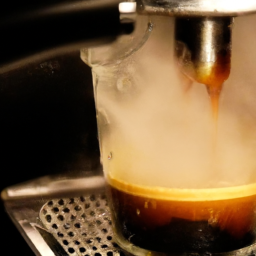
The aroma of freshly brewed coffee in the morning is truly unmatched. Nevertheless, this delightful scent can quickly turn unpleasant if you neglect to clean and maintain your coffee machine regularly.
As someone who relies on their morning cup of joe to jumpstart their day, I’ve learned firsthand the importance of keeping my coffee maker clean and free of buildup. And I’ve found that one of the best ways to do that is by using lemon juice.
Not only is lemon juice a natural cleaning agent, but it also imparts a fresh, citrusy scent to your coffee maker. Plus, it’s an affordable and easy-to-source ingredient that you likely already have on hand.
So, if you’re ready to say goodbye to stale coffee and hello to a fresh, clean brew, read on to learn how to clean your coffee maker with lemon juice.
Key Takeaways
- Lemon juice is a natural and effective way to remove mineral and coffee oil buildup in coffee makers.
- Cleaning coffee makers with lemon juice involves mixing equal parts lemon juice and water, letting it sit for 15 minutes, and rinsing thoroughly.
- Regular cleaning of coffee makers, including the filters and exterior, is important to prevent buildup and extend their lifespan.
- Lemon juice, vinegar, and baking soda are safe, non-toxic, and environmentally friendly natural cleaning solutions for coffee makers.
Why Cleaning Your Coffee Maker is Important
Don’t neglect your coffee maker’s cleanliness – it’s crucial to ensure a fresh and flavorful cup of joe every time!
One of the most important parts of cleaning your coffee maker is descaling, which is the process of removing mineral buildup from hard water. When you use hard water in your coffee maker, minerals like calcium and magnesium can build up and clog the machine, affecting the taste of the coffee and even damaging the machine over time.
Descaling your coffee maker on a regular basis can help prevent this buildup and extend the life of your machine. Using natural cleaners like lemon juice is also beneficial for cleaning your coffee maker. Not only is it effective at removing buildup and stains, but it’s also safe and eco-friendly.
Plus, the natural acidity of lemon juice can help break down any lingering oils or flavors in the machine, leaving your coffee tasting fresh and clean. Now that you understand the importance of descaling and the benefits of using natural cleaners, it’s time to gather your supplies.
Gather Your Supplies
First, let me tell you what you’ll need to clean your coffee maker with lemon juice. You’ll need a lemon, water, and a clean cloth. Make sure you have all of these supplies on hand before beginning the cleaning process.
Next, it’s important to prepare your coffee maker by emptying any leftover coffee and removing any filters or coffee grounds. This will ensure that the lemon juice can thoroughly clean the machine.
What You’ll Need
To get started with cleaning your coffee maker with lemon juice, you’ll need some basic household items. Firstly, you’ll need a fresh lemon or lemon juice concentrate. Lemon juice is an excellent natural cleaner that can remove stubborn stains and bacteria from your coffee maker. It also leaves behind a refreshing citrus scent that can help mask any unpleasant odors in your machine. If you don’t have lemons, you can use other natural alternatives such as vinegar or baking soda, but lemon juice is the most effective.
In addition to the lemon juice, you’ll need water, a clean sponge or cloth, and a measuring cup. The water is necessary to dilute the lemon juice and make it safe for use. The sponge or cloth is used to wipe the coffee maker’s exterior and interior surfaces. The measuring cup is useful in measuring the right amount of lemon juice and water to use.
Once you have all these items, you’re ready to move on to preparing your coffee maker for cleaning.
Preparing Your Coffee Maker
Before you can enjoy a fresh cup of coffee, it’s important to ensure that your trusty appliance is ready to go. Cleaning your coffee maker with lemon juice is an excellent way to get rid of any buildup and ensure that your next cup of coffee tastes as delicious as possible.
To prepare your coffee maker, you’ll need to follow these three steps:
-
Choosing the right lemon juice: When it comes to cleaning your coffee maker with lemon juice, it’s important to choose the right type of lemon juice. Freshly squeezed lemon juice is the best option, as it contains natural acids that can help break down any buildup in your coffee maker.
-
Best time to clean: You should aim to clean your coffee maker with lemon juice at least once a month. This will help to ensure that your coffee maker is always in top condition and that your coffee tastes as delicious as possible.
-
Disassembling your coffee maker: Before you can clean your coffee maker with lemon juice, you’ll need to disassemble it. This will allow you to access all of the parts that need to be cleaned, such as the carafe, filter, and brew basket.
Once your coffee maker is prepared, it’s time to create your lemon juice solution.
Create Your Lemon Juice Solution
As I begin creating my lemon juice solution, I gather a few key ingredients: lemons, water, and a measuring cup. I make sure to use fresh lemons, as they’ll provide the most effective cleaning power.
Lemon juice is not only great for cleaning, but also has alternative uses such as flavoring food and drinks, and can even be used as a natural insect repellent. It also has health benefits, such as being high in vitamin C and antioxidants.
To create the lemon juice solution, I start by cutting two lemons in half and squeezing the juice into a measuring cup. I then add water to the juice until I have a total of 2 cups of liquid. The acidity of the lemon juice will help break down any mineral buildup or stains inside my coffee maker.
With my solution ready, it’s time to move on to the next step: running my coffee maker.
Run Your Coffee Maker
Now that we’ve created our lemon juice solution, it’s time to run it through the coffee maker.
To do this, I’ll pour the solution into the water reservoir and turn on the machine as if I’m making a pot of coffee.
I’ll let the solution run through the machine completely before repeating the process for any stubborn stains.
How to Run the Lemon Juice Solution Through Your Coffee Maker
First things first, let’s brew up some lemon juice magic to get that coffee maker sparkling like new! One of the benefits of using lemon juice as a cleaning solution is that it’s a natural and inexpensive alternative to store-bought cleaners.
To make the solution, mix equal parts water and lemon juice and pour it into the coffee maker’s water reservoir. Next, run the coffee maker as you would if you were making a pot of coffee.
Allow the solution to brew and then let it sit in the carafe for about 15 minutes to give it time to work its magic. After the time has passed, pour out the solution and rinse the carafe and filter basket with clean water.
Repeat the process for stubborn stains.
Repeat the Process for Stubborn Stains
Don’t give up just yet, those pesky stains are no match for this powerful lemon juice solution! If you have stubborn stains that refuse to budge, repeat the same process of running the solution through your coffee maker, but let it sit for a longer period of time.
Instead of running the solution through once, let it cycle through your coffee maker several times. This should help to break down the buildup and remove those stubborn stains.
Alternatively, you can also use a soft-bristled brush to scrub the inside of your coffee maker, being careful not to damage any of the delicate parts. This can help to remove any remaining buildup that the lemon juice solution may have missed.
Finally, to prevent future stains, make sure to clean your coffee maker regularly and use filtered water. Now that you’ve tackled those stubborn stains, it’s time to move on to the final step – rinsing your coffee maker.
Rinse Your Coffee Maker
Now that we’ve cleaned our coffee maker with lemon juice, it’s important to thoroughly rinse it out to ensure that none of the lemon juice solution remains.
To do this, I recommend filling the coffee maker’s water reservoir with fresh water and running it through a brewing cycle without any coffee grounds.
Repeat this process a few times until you can no longer smell any traces of lemon juice.
It’s crucial to flush out the lemon juice solution completely to prevent any lingering taste or odor in your future cups of coffee.
How to Flush Out the Lemon Juice Solution
To get your coffee maker sparkling clean, you’re going to want to pour some fresh water into the reservoir and turn it on, letting the lemon juice solution flow through the machine and rinse all the residue away. Here’s how to flush out the lemon juice solution:
-
Fill the reservoir with fresh water and turn on the coffee maker. Let it run through a full cycle to flush out any remaining lemon juice and residue.
-
Repeat this process if necessary to ensure that all traces of lemon juice have been removed.
-
Once you’re satisfied that the coffee maker is clean, dry it thoroughly before using it again.
Flushing out the lemon juice solution is an essential step in the cleaning process. Failure to do so can result in a sour taste in your coffee the next time you brew. Therefore, it’s important to take the time to ensure that all traces of lemon juice have been removed before using your coffee maker again.
Importance of Thorough Rinsing
Ensuring that all traces of the cleaning solution have been thoroughly rinsed out of your machine is crucial. The importance of thorough rinsing can’t be emphasized enough, as any leftover residue can negatively impact the taste of your next cup of coffee.
It’s essential to rinse your coffee maker thoroughly with clean water after using a lemon juice solution. This will ensure that there is no leftover residue that could affect the flavor of your next brew.
The benefits of using a lemon juice cleaning solution are numerous. It’s a natural, affordable, and effective way to remove the buildup of minerals and coffee oils that can accumulate in your machine over time. However, it’s important to remember that thorough rinsing is essential to remove any traces of the cleaning solution.
With that in mind, let’s move on to the next section, where we will discuss how to clean your coffee pot.
Clean Your Coffee Pot
I always make sure to clean my coffee pot regularly to maintain its hygiene and extend its life. One of the best ways to clean a coffee pot is by using lemon juice, which is a natural and effective cleaning agent.
In this discussion, I’ll share my knowledge on how to clean a coffee pot with lemon juice, as well as tips on removing stains and mineral buildup.
How to Clean Your Coffee Pot with Lemon Juice
Using lemon juice to clean your coffee pot is one of the best cleaning alternatives available. Not only is it effective in getting rid of stubborn stains and mineral buildup, but it also has the added benefits of being a natural cleaner.
Lemon juice is acidic and contains citric acid which works effectively to dissolve mineral buildup and stains without harming the material of the coffee pot. To clean your coffee pot with lemon juice, simply mix equal parts of lemon juice and water, then pour the solution into the coffee pot and let it sit for about 15 minutes.
After that, rinse the pot thoroughly with water and dry it with a clean towel. The result is a sparkling clean coffee pot that is free of stains and mineral buildup. Now that we’ve learned how to clean your coffee pot with lemon juice, the next step is to remove any stains and mineral buildup that may be present.
This can be easily accomplished by using a solution of vinegar and water.
Removing Stains and Mineral Buildup
You may notice unsightly discoloration and hard deposits on your morning energizer, reminiscent of the buildup on a prehistoric fossil. Fear not, there are simple solutions to remove these stains and mineral buildup from your coffee maker. Here are some tips to prevent buildup and alternative cleaning methods:
-
Use filtered water: Hard water contains minerals that can cause buildup over time. Using filtered water can reduce the amount of minerals in your water and prevent buildup in your coffee maker.
-
Use vinegar: If you don’t have lemon juice on hand, vinegar can also be used to remove mineral buildup. Simply mix equal parts water and vinegar and run it through your coffee maker.
-
Use baking soda: Baking soda is a natural cleaner that can also remove mineral buildup. Mix 1/4 cup of baking soda with 1 quart of water and run it through your coffee maker.
-
Clean regularly: To prevent buildup, it’s important to clean your coffee maker regularly. This can be done by running a mixture of water and lemon juice or vinegar through your coffee maker once a month.
Preventing buildup and cleaning your coffee maker regularly can help extend its lifespan and ensure your morning cup of joe tastes just as delicious as the first time you brewed it. Now, let’s move onto the next section and learn how to clean your coffee filter.
Clean Your Coffee Filter
To effectively clean your coffee maker with lemon juice, start by cleaning your coffee filter. By doing so, you ensure that the filter is free from any debris or leftover coffee grounds that may affect the taste of your coffee. Additionally, cleaning your filter regularly will help prolong its lifespan and prevent the need for constant replacement.
There are alternative methods to cleaning your coffee filter, such as using vinegar or baking soda. However, using lemon juice has its own benefits. Not only does it effectively remove any stains and mineral buildup, but it also leaves a fresh and citrusy scent in your coffee maker. Moreover, if you use reusable filters, cleaning them regularly with lemon juice will prevent any mold or bacteria from growing. Below is a table that compares the benefits of using a reusable filter versus a paper filter.
| Benefits | Reusable Filter | Paper Filter |
|---|---|---|
| Cost | One-time purchase | Ongoing expense |
| Environmental Impact | Less waste | More waste |
| Taste | No paper taste | Possible paper taste |
| Maintenance | Requires cleaning | Disposable |
Now that you have cleaned your coffee filter, it’s time to move on to wiping down your coffee maker.
Wipe Down Your Coffee Maker
So, after cleaning the coffee filter, it’s time to focus on the exterior of the coffee maker.
I like to use lemon juice to wipe down the surface of the coffee maker, as it’s a natural disinfectant and can remove any stains or residue from the exterior.
Simply squeeze some lemon juice onto a cloth and wipe down the entire surface of the coffee maker, making sure to pay extra attention to any areas that may have buildup or stains.
How to Clean the Exterior of Your Coffee Maker with Lemon Juice
By using lemon juice, you can easily clean the exterior of your coffee maker and leave it looking sparkling clean. Lemon juice is an effective DIY cleaner that can help remove stains, grime, and hard water deposits from the exterior of your coffee maker. The benefit of natural cleaning is that it’s safe, non-toxic, and environmentally friendly.
To clean the exterior of your coffee maker with lemon juice, simply mix equal parts lemon juice and water in a spray bottle. Then, spray the mixture onto the coffee maker’s exterior and wipe it down with a soft cloth. The acid in the lemon juice helps dissolve any buildup, leaving the surface clean and shiny. Plus, the fresh scent of lemon will leave your coffee maker smelling great.
When it comes to removing stains and disinfecting surfaces, it’s important to use the right cleaning products to ensure that your coffee maker is thoroughly cleaned and free of harmful bacteria.
Removing Stains and Disinfecting Surfaces
Now that we’ve covered how to clean the exterior of your coffee maker with lemon juice, let’s move on to removing stains and disinfecting surfaces. Lemon juice is a natural and effective DIY disinfectant that can help remove hard water stains and sanitize your coffee maker. However, if you don’t have lemon juice on hand or prefer to use an alternative, there are other options available.
To remove stains and disinfect surfaces, start by filling the water reservoir with equal parts water and lemon juice. Run a brew cycle as you normally would, allowing the mixture to run through the coffee maker. Then, rinse the reservoir and run a few more cycles with plain water to ensure all the lemon juice has been flushed out.
If you don’t have lemon juice on hand, you can use white vinegar instead. Simply mix equal parts water and vinegar and run it through the coffee maker as you would with the lemon juice mixture.
Regular maintenance tips are essential to keeping your coffee maker clean and functioning properly. Let’s take a look at some simple steps you can take to keep your coffee maker in top shape.
Regular Maintenance Tips
I want to discuss some tips for regular maintenance of your coffee maker. First and foremost, it’s important to know how often to clean it. Depending on the frequency of use, it’s recommended to clean your coffee maker at least once a month. This is to prevent buildup of mineral deposits and bacteria.
There are other natural cleaning solutions that can be used besides lemon juice, such as vinegar or baking soda. These can be just as effective.
How Often to Clean Your Coffee Maker
Regularly cleaning your coffee maker is the key to keeping your coffee tasting fresh as a daisy. If you want to use lemon juice to clean your coffee maker, it’s important to know how often you should do it.
Here are a few tips to help you decide when it’s time to clean your coffee maker:
- If you use your coffee maker every day, you should clean it once a month.
- If you only use your coffee maker a few times a week, you can clean it every two months.
- If you notice that your coffee tastes bitter or has a strange odor, it’s time to clean your coffee maker.
- If you live in an area with hard water, you may need to clean your coffee maker more often.
By following these tips, you can ensure that your coffee maker stays clean and your coffee always tastes great.
If you’re interested in other natural cleaning solutions for your coffee maker, keep reading!
Other Natural Cleaning Solutions
Looking for alternative ways to keep your morning cup of joe fresh and clean? Try out some of these natural cleaning solutions for your trusty coffee brewing companion.
First off, vinegar is a great natural cleaning solution that can effectively remove mineral buildup in your coffee maker. Simply mix equal parts of white vinegar and water and let it run through your coffee maker as if you were brewing a pot of coffee. Then, rinse the coffee maker thoroughly with water to remove any residual vinegar taste.
Another natural cleaning solution to try out is baking soda. Baking soda is known for its ability to remove stains and odors, making it a perfect choice for cleaning your coffee maker. Mix a quarter cup of baking soda with a cup of warm water and pour it into the coffee maker’s water reservoir. Let it sit for about 15 minutes before running a full cycle of water through the machine. Rinse the coffee maker again with water to remove any baking soda residue.
With these natural cleaning solutions, you can easily keep your coffee maker in tip-top shape without relying on harsh chemicals. Enjoy your fresh and clean coffee!
Enjoy Your Fresh and Clean Coffee
To savor the taste of your freshly brewed coffee, take a moment to appreciate how the lemon juice has removed all the grime and buildup from your coffee maker, leaving it sparkling clean like a diamond in the sun.
Not only is lemon juice an effective cleaning solution, but it also has numerous benefits that make it a popular choice for those who prefer natural cleaning solutions. Here are a few reasons why lemon juice is a great option for cleaning your coffee maker:
- Lemon juice is a natural disinfectant that can kill bacteria and germs that may be lingering in your coffee maker.
- It’s a safe and non-toxic solution that won’t harm you or the environment.
- Lemon juice is easily accessible and affordable, making it a convenient choice for those who want to avoid harsh chemical cleaners.
- Using lemon juice can help extend the life of your coffee maker by preventing buildup and reducing the risk of clogs or malfunctions.
With your coffee maker now clean and ready for use, it’s time to enjoy your freshly brewed coffee. The taste and aroma of your coffee will be enhanced by the clean equipment, allowing you to savor every sip.
So, sit back, relax, and enjoy a cup of coffee knowing that you’ve taken steps to maintain the cleanliness and longevity of your coffee maker.
Frequently Asked Questions
Can I use other types of citrus fruit instead of lemons to clean my coffee maker?
I’ve found that alternative citrus fruits like oranges and grapefruits can be used to clean a coffee maker. However, their acidity levels may not be as effective as lemons. A comparison of effectiveness is recommended.
How often should I clean my coffee maker to ensure optimal performance?
I recommend cleaning your coffee maker every 3 months to prevent mineral buildup and bacterial growth. Signs of a dirty coffee maker include a bitter taste, slow brew time, and visible residue.
Is it safe to use lemon juice to clean a coffee maker made of plastic?
I’ve found that lemon juice is safe to use for cleaning my plastic coffee maker. It’s an effective cleaning agent that removes stubborn stains and buildup. However, always follow the manufacturer’s guidelines and rinse thoroughly to avoid any residue.
Can I add any other ingredients to the lemon juice solution to enhance the cleaning process?
I’ve found that adding a splash of vinegar to my lemon juice solution enhances its cleaning power. Lemon juice has many other uses and benefits for cleaning, and to maintain a clean coffee maker, regularly descale and clean the carafe and filter basket.
What should I do if the lemon juice solution leaves a residue or odor in my coffee maker after cleaning?
If lemon juice leaves a residue or odor in my coffee maker after cleaning, I would try alternative cleaning methods such as vinegar or baking soda. Lemon juice alternatives include citric acid or hydrogen peroxide.
Conclusion
In conclusion, cleaning your coffee maker with lemon juice is a simple and effective way to ensure your morning cup of joe is fresh and delicious. By gathering your supplies, creating the lemon juice solution, running your coffee maker, rinsing and cleaning the filter, and wiping down your machine, you can easily maintain the cleanliness of your coffee maker.
Regular maintenance, such as descaling and cleaning after each use, will keep your coffee maker in top condition for years to come. So, the next time you brew a pot of coffee, take a moment to appreciate the cleanliness of your machine and the refreshing taste of lemon in your cup.
As the old saying goes, "cleanliness is next to godliness,"and with a clean coffee maker, you’ll feel like a coffee deity.
Cindy thoroughly researches juicing trends, techniques, and recipes to provide readers with practical advice and inspiration. Her writing style is accessible, engaging, and designed to make complex concepts easy to understand. Cindy’s dedication to promoting the advantages of juicing shines through her work, empowering readers to make positive changes in their lives through the simple act of juicing.
Juice Tips and Tricks
How to Make Aloe Vera Juice Taste Better

Tired of the strong flavor of aloe vera juice? No problem, we’ve got the answer for you.
In this article, we’ll share some tips and tricks to make your aloe vera juice taste better. We have tried and tested various methods to enhance the flavor without compromising the health benefits.
From choosing the right juice to adding natural sweeteners and infusing with fruits and herbs, we’ve got all the information you need to transform your aloe vera juice into a delightful and refreshing beverage.
Let’s dive in!
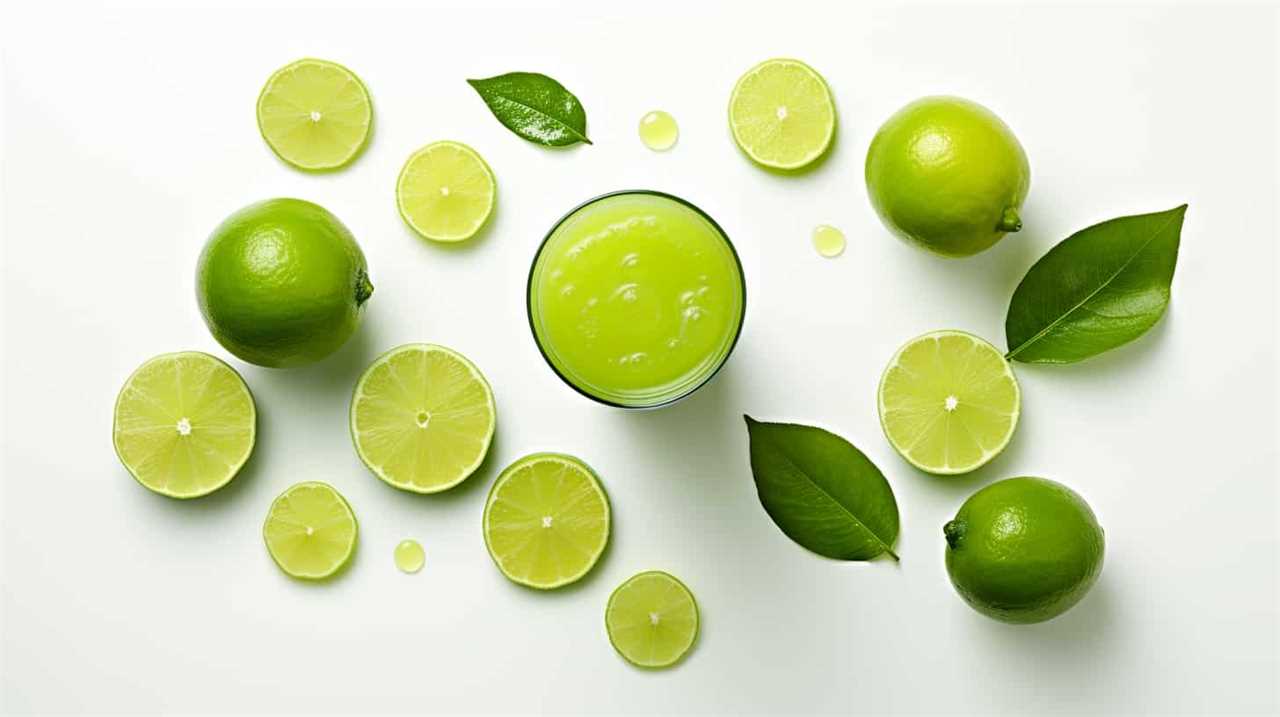
Key Takeaways
- Choose a reputable brand of aloe vera juice that prioritizes quality and uses organic, pure aloe vera.
- Avoid brands that contain added sugars or artificial ingredients.
- Use natural sweeteners like honey, agave syrup, or stevia to enhance the taste of aloe vera juice.
- Experiment with adding fruits, herbs, and other juices to create unique flavor combinations and enhance the health benefits of aloe vera juice.
Choosing the Right Aloe Vera Juice
We can enhance our experience with aloe vera juice by selecting the right brand and type for our preferences. When it comes to finding a reputable brand, it’s important to do some research and read reviews from other consumers. Look for brands that prioritize quality and use organic, pure aloe vera without any added sugars or artificial ingredients. Understanding the health benefits of aloe vera juice is also crucial in making the right choice. Aloe vera is known for its soothing properties, aiding digestion, promoting skin health, and boosting the immune system. By choosing a high-quality brand, we can ensure that we’re getting the maximum benefits from our aloe vera juice.
Now that we know how to choose the right brand, let’s move on to the next step of adding natural sweeteners.
Adding Natural Sweeteners
To enhance the flavor of our aloe vera juice, we can add natural sweeteners such as honey or agave syrup. Using alternative sweeteners not only adds sweetness but also brings unique flavors to the juice. Here are some options to consider:
- Stevia: A natural sweetener derived from the Stevia plant, it’s a zero-calorie alternative to sugar.
- Maple Syrup: This natural sweetener adds a rich and earthy flavor to the aloe vera juice.
- Dates: Pureed dates can be used to sweeten the juice while also providing essential nutrients like fiber.
In addition to using alternative sweeteners, we can enhance the flavor of aloe vera juice by adding spices and extracts. Cinnamon, ginger, or vanilla extract can add warmth and depth to the taste. By experimenting with different combinations of these natural sweeteners, spices, and extracts, we can create a flavor profile that suits our preferences.

Now, let’s move on to the next section and learn how to infuse aloe vera juice with fruits and herbs to further enhance its taste.
Infusing With Fruits and Herbs
As we explore ways to make our aloe vera juice taste better, one option to consider is infusing it with fruits and herbs. Creating unique aloe vera blends by adding fruits and herbs not only enhances the flavor but also adds a touch of freshness and complexity to the juice.
Fruits like strawberries, pineapple, or citrus can add a burst of sweetness, while herbs like mint, basil, or ginger can provide a subtle yet refreshing twist. Exploring the benefits of herbal infusions can also be beneficial for our health. For example, adding a few sprigs of lavender can promote relaxation and reduce stress. Additionally, infusing aloe vera juice with rosemary can aid digestion and boost the immune system.
Blending With Other Juices
Let’s try mixing aloe vera juice with different fruit juices to create delicious and refreshing blends. Blending aloe vera juice with other fruits not only enhances its taste but also adds nutritional benefits to your drink. Here are three fruit juices that you can mix with aloe vera juice:

- Orange juice: Combining aloe vera juice with orange juice not only adds a tangy flavor but also boosts your intake of vitamin C, which is essential for a strong immune system.
- Pineapple juice: Mixing aloe vera juice with pineapple juice creates a tropical blend that isn’t only refreshing but also helps in digestion. Pineapple contains bromelain, an enzyme that aids in breaking down proteins and promoting better digestion.
- Watermelon juice: Blending aloe vera juice with watermelon juice creates a hydrating and refreshing combination. Watermelon is rich in water content and contains electrolytes that can help replenish your body’s fluids.
Experimenting With Flavor Combinations
While we can try various flavor combinations with aloe vera juice, it’s important to find the right balance to enhance its taste. Experimenting with different flavors can’t only make the juice more enjoyable but also enhance its health benefits.
Aloe vera juice is known for its numerous health benefits, such as boosting digestion, promoting hydration, and supporting the immune system. By adding complementary flavors, we can create a refreshing summer drink that not only tastes great but also provides a nutritional boost.
Some popular flavor combinations include mixing aloe vera juice with citrus fruits like lemon or orange, adding a splash of coconut water for a tropical twist, or combining it with cucumber and mint for a refreshing and cooling effect.
Don’t be afraid to get creative and find the flavor combination that suits your taste buds best!

Frequently Asked Questions
Can I Use Store-Bought Aloe Vera Gel Instead of Fresh Aloe Vera for Making Juice?
Yes, you can use store-bought aloe vera gel instead of fresh aloe vera for making juice. However, it’s important to note that fresh aloe vera juice may have more health benefits due to its higher nutrient content.
How Long Can I Store Aloe Vera Juice in the Refrigerator?
Aloe vera juice can be stored in the refrigerator for up to a week. Refrigeration helps maintain the longevity and freshness of the juice, preserving its beneficial properties.
Can Aloe Vera Juice Help With Digestive Issues?
Aloe vera juice can potentially help with digestive issues when taken in appropriate dosages. However, it is important to note that there may be potential side effects. It is always best to consult with a healthcare professional before starting any new supplement regimen.
Can I Use Artificial Sweeteners Instead of Natural Sweeteners in My Aloe Vera Juice?
Using artificial sweeteners in aloe vera juice may affect its taste and potential health benefits. However, natural sweeteners like honey or stevia can enhance the flavor without compromising its nutritional value.

Is It Safe to Drink Aloe Vera Juice Every Day?
Drinking aloe vera juice daily can have numerous benefits, such as improving digestion and boosting the immune system. However, consuming it regularly may also lead to potential side effects like diarrhea or stomach cramps.
Conclusion
In conclusion, making aloe vera juice taste better is easy and enjoyable.
By choosing the right aloe vera juice and adding natural sweeteners, infusing with fruits and herbs, blending with other juices, and experimenting with flavor combinations, you can create a delightful and refreshing drink.
So go ahead and unleash your creativity in the kitchen, and transform your aloe vera juice into a sensational elixir that will transport your taste buds to paradise.

Susannah expertise lies in researching and compiling evidence-based content on juicing, nutrition, and overall health. She is committed to ensuring that The Juicery World offers accurate, up-to-date, and trustworthy information to empower readers to take control of their health. Susannah’s goal is to inspire individuals to embrace juicing as a way to nourish their bodies and live their best lives.
Juice Tips and Tricks
How to Make a Glass of Lemonade With Bottled Lemon Juice

Are you craving a cool glass of lemonade to quench your thirst? Look no further! Try out our perfect recipe using bottled lemon juice that will surely please your taste buds.
In this article, we’ll guide you through the process of creating a tangy and sweet concoction that will leave you feeling refreshed and satisfied.
So grab your ingredients and let’s get started on this delightful journey of serving ourselves and others a glass of pure lemony goodness.
Key Takeaways
- Consider the storage of the bottled lemon juice (dark glass or plastic bottles, protect from light exposure, check expiration date)
- Choose a suitable pitcher and fresh lemons for enhanced flavor
- Store the lemonade concentrate in the refrigerator to maintain freshness
- Adjust the sweetness and tartness to taste with sugar or more lemon juice, and experiment with different sweeteners or additional flavors.
Choosing the Right Bottled Lemon Juice
What are the key factors we should consider when selecting the right bottled lemon juice for our lemonade?

One important factor is how the lemon juice is stored. Look for bottles that are made of dark glass or plastic, as they help protect the juice from light exposure, which can degrade its quality. It’s also important to check the expiration date to ensure freshness.
Another benefit of using bottled lemon juice is convenience. It saves time and effort compared to squeezing fresh lemons. Additionally, bottled lemon juice provides consistent flavor, as the acidity levels are standardized.
When selecting a brand, consider reading reviews and checking for certifications, such as organic or non-GMO.
Gathering the Necessary Ingredients and Tools
How can we gather all the necessary ingredients and tools to make a glass of lemonade with bottled lemon juice?
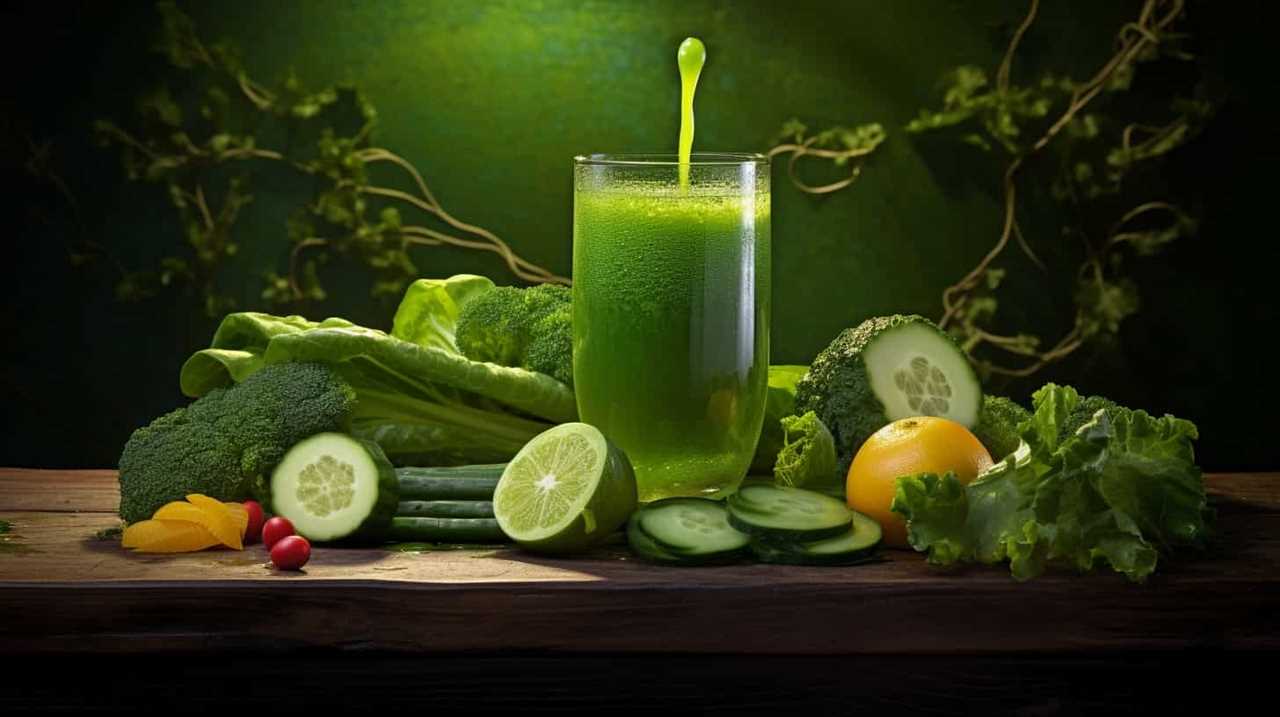
It’s important to start with the right pitcher. Look for a pitcher that’s made of glass or BPA-free plastic, as these materials won’t affect the taste of the lemonade. The pitcher should also have a lid or cover to keep the lemonade fresh and prevent spills.
Now, let’s talk about the lemons. While bottled lemon juice is convenient, using fresh lemons instead can elevate the flavor of your lemonade. Choose lemons that are firm and have a bright yellow color. Give them a gentle squeeze to ensure they’re juicy. To extract the juice, you’ll need a citrus juicer or a reamer. These tools make it easy to get every last drop of juice from the lemons.
Mixing the Lemonade Concentrate
To start mixing the lemonade concentrate, we’ll slowly pour the bottled lemon juice into the pitcher. It’s important to choose the right container for the lemonade concentrate. A pitcher with a lid or a tightly sealed container will help maintain the freshness and prevent any spills or leaks. Once the lemon juice is in the pitcher, we can move on to the next step of adding water and sweetener.
To ensure the lemonade concentrate stays fresh, it’s essential to store it properly. Keep the pitcher in the refrigerator to maintain its cool temperature and prevent any bacteria growth. If you have any leftover concentrate, transfer it to a smaller container with an airtight lid before refrigerating. This will help retain its flavor and prevent any contamination.

Now that we’ve mixed the lemonade concentrate, it’s time to adjust the sweetness and tartness to taste.
Adjusting the Sweetness and Tartness to Taste
We can adjust the sweetness and tartness of the lemonade to taste by adding more sugar or lemon juice, respectively. If you prefer a sweeter lemonade, simply add more sugar and stir until it dissolves completely. You can experiment with different sweeteners such as honey or agave syrup to find the perfect balance of sweetness.
On the other hand, if you want a tangier lemonade, add more lemon juice gradually, tasting as you go until it reaches your desired level of tartness.
Additionally, you can get creative with your lemonade by adding flavors like fresh mint leaves or a hint of lavender. These additions can elevate the flavor profile and create a more refreshing and unique experience.

Now that we’ve adjusted the sweetness and tartness of our lemonade, let’s move on to serving and enjoying your refreshing glass of lemonade.
Serving and Enjoying Your Refreshing Glass of Lemonade
Now let’s sit back, relax, and savor our refreshing glass of lemonade.
When it comes to serving and enjoying this delightful drink, there are a few techniques and garnishing options to consider.
Firstly, serving your lemonade chilled is essential for maximum enjoyment. Ensure that you have chilled glasses or add ice cubes to the glasses before pouring the lemonade.

To add a touch of elegance, you can garnish your lemonade with a slice of lemon on the rim of the glass. For an extra burst of flavor, you could also add a sprig of fresh mint or a few berries.
Remember to gently stir the lemonade before serving to evenly distribute the flavors.
Now, take a sip, feel the refreshing tang of lemon, and let the sweet and tart flavors dance on your taste buds.
Cheers!
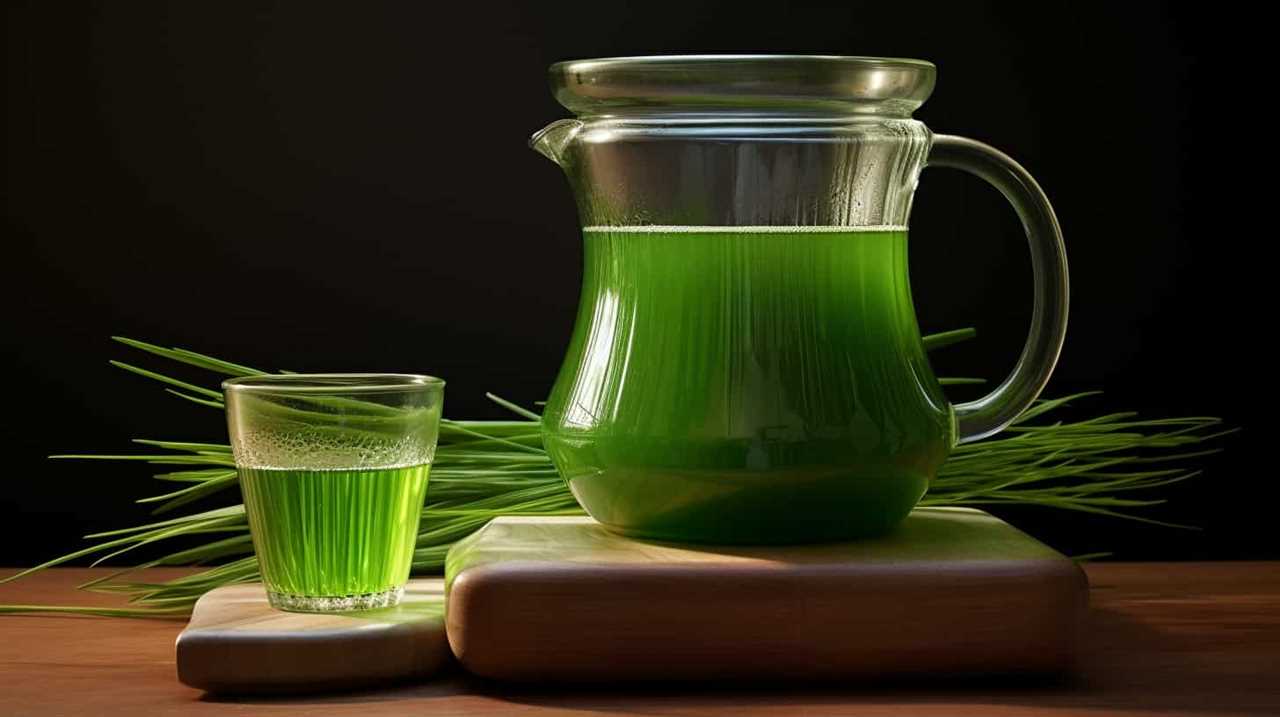
Frequently Asked Questions
Can I Use Fresh Lemons Instead of Bottled Lemon Juice?
Fresh lemons offer numerous benefits over bottled lemon juice. The taste of fresh lemons is unparalleled, providing a vibrant and tangy flavor. Incorporating fresh lemons into your lemonade will elevate its taste and give it a refreshing and authentic twist.
Can I Substitute Sugar With a Different Sweetener?
Substituting sweeteners in lemonade can enhance the flavor and offer health benefits. We’re knowledgeable about alternative sweeteners and can provide precise, detailed instructions on using them in place of sugar.
How Long Does the Lemonade Concentrate Need to Chill in the Refrigerator?
The chilling time for the lemonade concentrate in the refrigerator is typically around 1-2 hours. Using bottled lemon juice offers the benefit of convenience and consistent flavor for a refreshing glass of lemonade.
Can I Add Other Fruits or Flavors to the Lemonade?
Sure, we can definitely add different fruits or flavors to our lemonade. It’s a great way to experiment with unique flavors and create refreshing, personalized drinks. The possibilities are endless!

How Long Does the Lemonade Stay Fresh in the Refrigerator?
Lemonade made with bottled lemon juice can stay fresh in the refrigerator for about 5-7 days. To maximize shelf life, store it in an airtight container and keep it chilled.
Conclusion
And so, with a few simple steps and the right ingredients, a glass of refreshing lemonade is born.
Like a symphony of flavors dancing on your taste buds, this tangy elixir quenches thirst and brings joy on a hot summer day.
Just a sip transports you to a world of citrusy delight, where the sweetness and tartness blend harmoniously.

So go ahead, indulge in the art of lemonade-making and savor every drop of this sun-kissed nectar.
Cheers to the perfect glass of lemonade!
Susannah expertise lies in researching and compiling evidence-based content on juicing, nutrition, and overall health. She is committed to ensuring that The Juicery World offers accurate, up-to-date, and trustworthy information to empower readers to take control of their health. Susannah’s goal is to inspire individuals to embrace juicing as a way to nourish their bodies and live their best lives.
Juice Tips and Tricks
How to Know if Orange Juice Is Bad

We’ve all been in that situation before – reaching for a glass of orange juice and hesitating, unsure if it’s still okay to drink. Fear not! This article will give you the knowledge you need to determine for sure if your orange juice is still fresh or if it’s gone bad.
With a blend of scientific precision and practical tips, we’ll explore color changes, strange smells, off taste, texture changes, and mold or growth that may indicate spoilage.
Let’s dive in and serve ourselves a refreshing glass of certainty!
Key Takeaways
- Color changes in orange juice can indicate a loss of freshness and shelf life extension, but it doesn’t necessarily mean the juice is bad.
- Unusual or off-putting odors in orange juice, such as sour or fermented scents, can be a sign of poor quality.
- An off taste in orange juice, such as sour, bitter, or fermented flavors, suggests that the juice is spoiled.
- Texture changes in orange juice, such as pulp separation or a thicker consistency, can occur as the juice ages, so it’s important to consume it before the expiration date.
Color Changes in Orange Juice
We should be aware that color changes can indicate whether orange juice is bad.

When it comes to orange juice, color is a crucial factor to consider. As oranges are exposed to air, an oxidation process occurs, which leads to changes in color. Fresh orange juice has a vibrant orange hue, indicating its freshness and high nutritional value.
However, as time passes, the juice may undergo a color change, turning dull or brownish. This change in color is a result of the oxidation process, which affects the flavor and quality of the juice. It’s important to note that while a change in color doesn’t necessarily mean the juice is bad, it does indicate that the juice is losing its freshness and shelf life extension.
Therefore, it’s advisable to consume orange juice when it’s at its freshest, as indicated by its vibrant orange color.
Strange Smells in Orange Juice
When it comes to evaluating orange juice, we should be cautious of any strange smells or odors. A fresh, pleasant smell is indicative of good quality orange juice. However, if you notice any unusual or off-putting odors, it may be a sign that the juice has gone bad. These smells can range from a sour or fermented scent to a rancid or moldy aroma.

It’s important to note that while some natural variations in scent can occur due to the specific variety of oranges used, any strong or unpleasant smells should raise concerns. If you have citrus fruit allergies, it’s especially important to pay attention to the smell of orange juice, as it could indicate the presence of spoilage or contamination.
Ensuring the quality of orange juice is essential as it’s a popular beverage known for its health benefits, including being rich in vitamin C and antioxidants.
Off Taste of Orange Juice
Our taste buds can detect even the slightest hint of an off taste in orange juice, which can indicate that it has gone bad. The taste of orange juice should be fresh, tangy, and slightly sweet. If it tastes sour, bitter, or fermented, it’s likely spoiled.
One common cause of an off taste in orange juice is the use of overripe oranges. When oranges become overripe, their flavor profile changes, resulting in a less pleasant taste. Another factor to consider is the expiration date. Orange juice that has passed its expiration date is more likely to develop an off taste. It’s important to check the expiration date before consuming orange juice to ensure its freshness and quality.
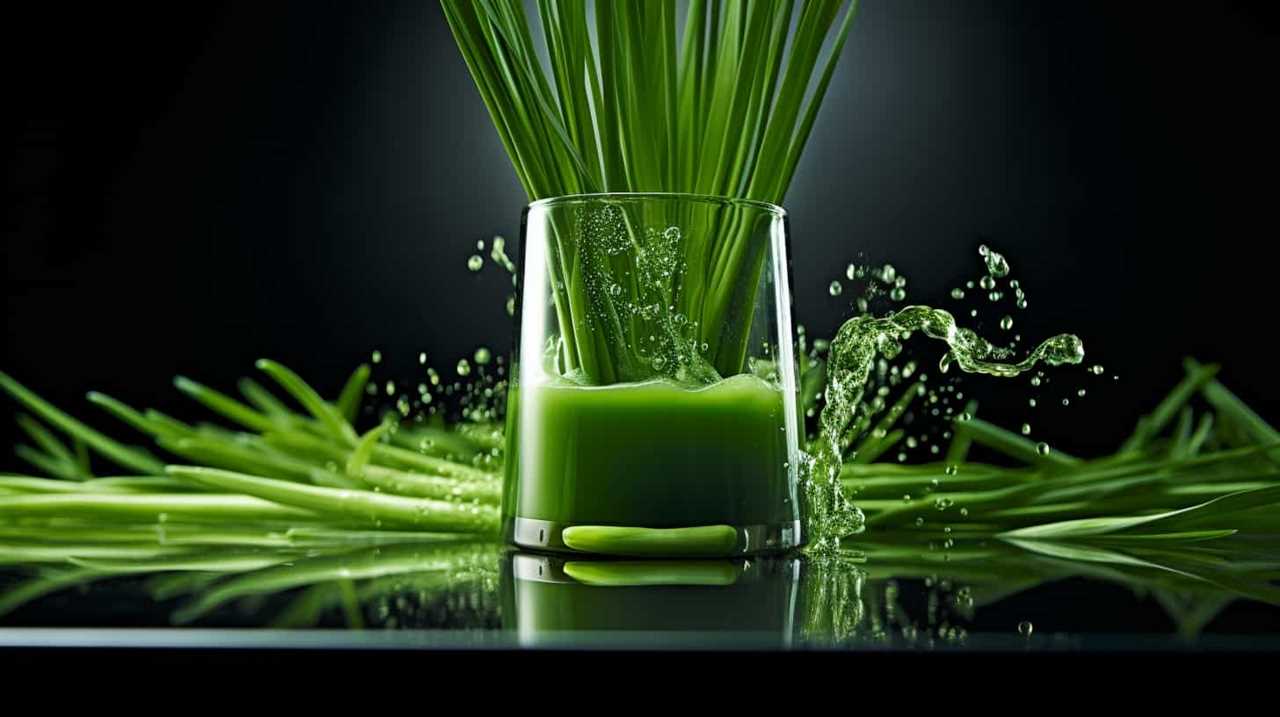
Now, let’s move on to discuss the texture changes in orange juice.
Texture Changes in Orange Juice
As we explore the texture changes in orange juice, it’s important to note that certain factors can cause it to become thicker or develop sediment. One common texture change in orange juice is pulp separation, where the pulp separates from the liquid and settles at the bottom. This can occur naturally over time, as the pulp particles become denser and sink.
Another factor that can affect the texture of orange juice is the expiration date. As orange juice ages, it may start to develop a thicker consistency and even form sediment. This is a result of the natural breakdown of the juice’s components. Therefore, it’s crucial to check the expiration date on orange juice and consume it before it reaches its expiration date to avoid any undesirable texture changes.
Mold or Growth in Orange Juice
We need to be aware of the possibility of mold or other growth occurring in orange juice. Mold can develop in orange juice if it isn’t stored properly or if it has passed its expiration date.
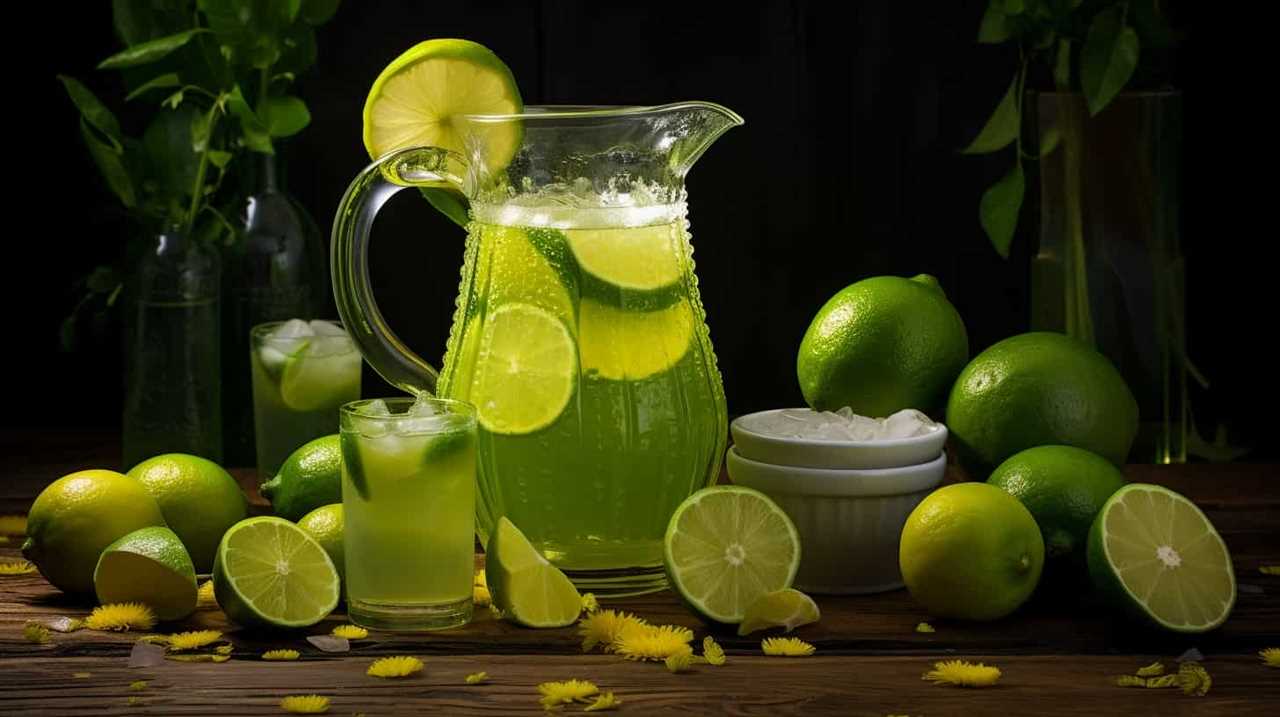
To prevent mold growth, it’s important to follow these steps:
- Store orange juice in the refrigerator at a temperature below 40°F (4°C).
- Check the expiration date on the bottle before consuming. Discard any orange juice that has expired.
- Keep the container tightly sealed to prevent air and moisture from entering, as these can promote mold growth.
Regularly inspecting orange juice for any signs of mold or unusual growth is essential. If you notice any discoloration, a strange odor, or visible mold, it’s best to discard the juice to avoid any potential health risks.
Frequently Asked Questions
Can Orange Juice Go Bad if It’s Stored in the Freezer for Too Long?
Frozen orange juice can potentially lose its nutrients and change its taste if stored in the freezer for too long. It is important to check for signs of spoilage before consuming it.
How Long Can Orange Juice Stay Fresh in the Refrigerator Once It’s Opened?
Once opened, orange juice can stay fresh in the refrigerator for about 7-10 days. To maintain its freshness, store it properly by keeping it tightly sealed and at a consistently cold temperature.
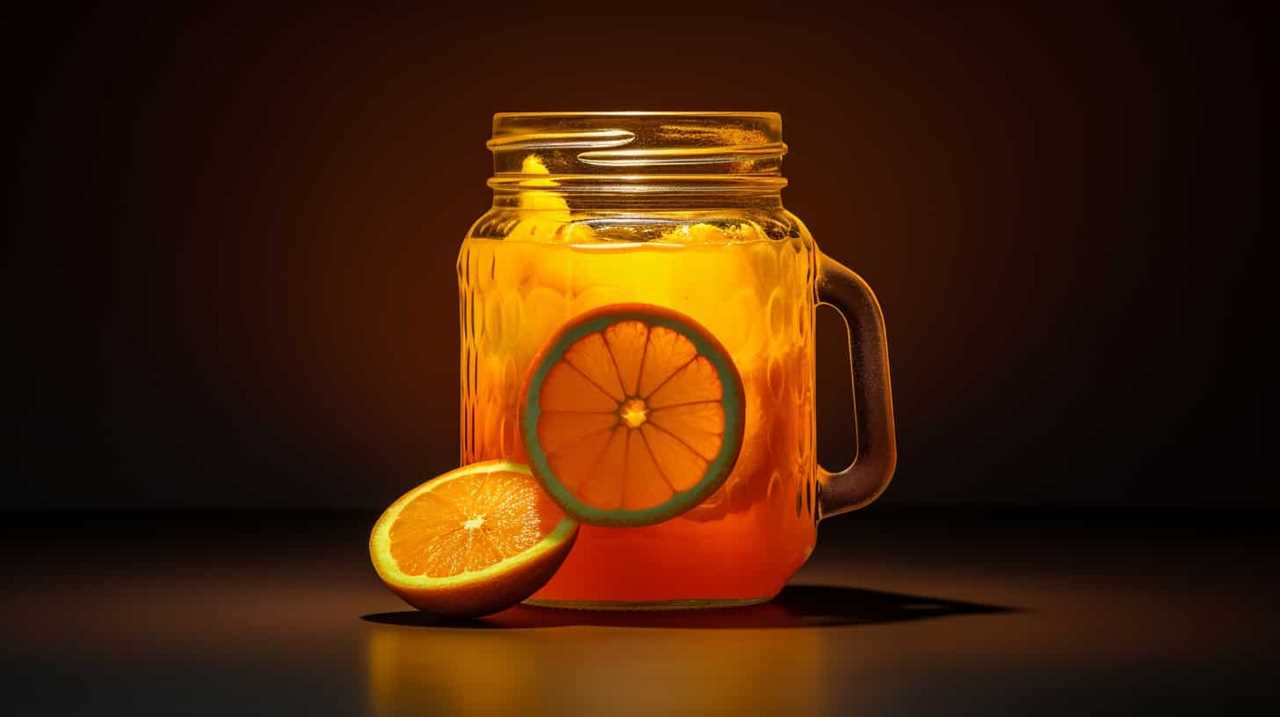
Is It Safe to Consume Orange Juice That Has Been Left Out at Room Temperature Overnight?
Left out orange juice may not be safe to drink as it can harbor harmful bacteria. Signs of spoiled orange juice include a sour smell, mold growth, and a change in color or taste.
Can Orange Juice Develop Harmful Bacteria if It’s Past Its Expiration Date but Still Looks and Smells Fine?
Orange juice can cause food poisoning if it develops harmful bacteria, even if it looks and smells fine. Signs of spoiled orange juice include a sour smell, mold growth, and a change in color or taste.
Does the Nutritional Value of Orange Juice Decrease as It Starts to Go Bad?
As orange juice goes bad, its nutritional value decreases. The longer it sits on the shelf, the more nutrients it loses. Signs of spoilage include a sour smell, off taste, and mold growth.
Conclusion
In conclusion, determining if orange juice is bad requires careful observation of color changes, strange smells, off taste, and texture changes. Just like a detective investigating a case, we must rely on our senses to detect any signs of spoilage.
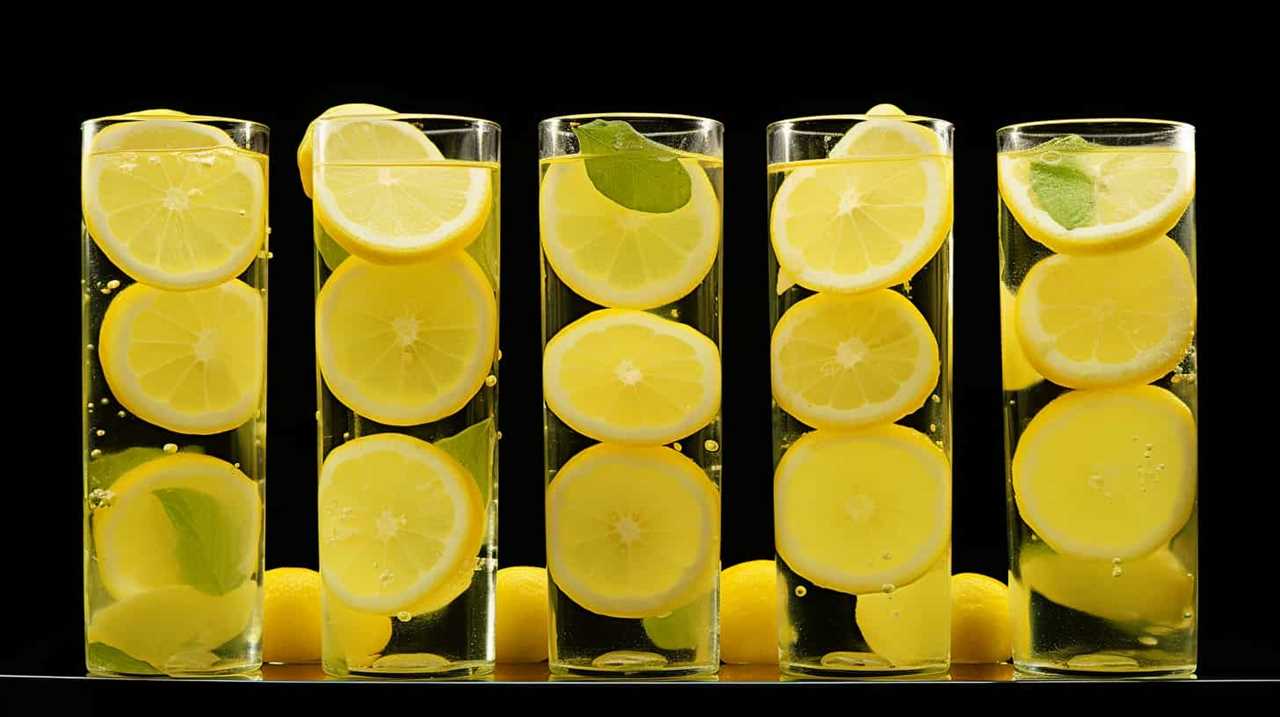
If we detect mold or growth in the orange juice, it’s a clear indication that it’s no longer safe to consume. By remaining vigilant and attuned to these indicators, we can ensure that our orange juice is always fresh and enjoyable.
Susannah expertise lies in researching and compiling evidence-based content on juicing, nutrition, and overall health. She is committed to ensuring that The Juicery World offers accurate, up-to-date, and trustworthy information to empower readers to take control of their health. Susannah’s goal is to inspire individuals to embrace juicing as a way to nourish their bodies and live their best lives.
-

 Juice Tips and Tricks2 months ago
Juice Tips and Tricks2 months agoHow To Make Homemade Pickle Juice
-

 Juice Tips and Tricks2 months ago
Juice Tips and Tricks2 months agoHow Much Lemon Juice Is Equal To Half A Lemon
-

 Health Benefits of Juice3 months ago
Health Benefits of Juice3 months agoHow Much Bottled Lemon Juice Equals 1 Lemon
-

 Juice Tips and Tricks2 months ago
Juice Tips and Tricks2 months agoHow Much Lemon Juice Concentrate Equals One Lemon
-

 Juice Tips and Tricks1 month ago
Juice Tips and Tricks1 month agoHow Long Can You Drink Orange Juice After The Expiration Date
-

 Juice Tips and Tricks3 months ago
Juice Tips and Tricks3 months agoHow Long Does Lemon Juice Last After Expiration Date
-

 Fruit Juice Varieties4 weeks ago
Fruit Juice Varieties4 weeks agoTop 11 Most Loved Fruit Juice Varieties
-

 Juice Tips and Tricks2 months ago
Juice Tips and Tricks2 months agoHow Much Lemon Juice Is Equivalent To 1 Lemon




